Mark Gertler achieved renown as a painter in the years before the first world war. He was a star turn at the Slade School of Art in London, where his contemporaries included Stanley Spencer, Paul Nash, CRW Nevinson and David Bomberg. He was petted and feted, attracted discriminating patrons and became the toast of Upper Bohemia.
Twenty-five years later, just before the start of the second world war, he pushed a mattress against the door of his London studio and gassed himself. He was 47 years old. "With his intellect and interest,"  Virginia Woolf asked in her diary, "why did the personal life become too painful?"Mark Gertler, the
Virginia Woolf asked in her diary, "why did the personal life become too painful?"Mark Gertler, the  youngest of the five children of Louis Gertler, master furrier, and his wife, Kate (Golda) Berenbaum, was born at 16 Gun Street, Spitalfields on 9th December, 1891.(above 2 views of Gun street)
youngest of the five children of Louis Gertler, master furrier, and his wife, Kate (Golda) Berenbaum, was born at 16 Gun Street, Spitalfields on 9th December, 1891.(above 2 views of Gun street) His parents were Jewish immigrants from Przemyśl in Galicia.
His parents were Jewish immigrants from Przemyśl in Galicia.
 Virginia Woolf asked in her diary, "why did the personal life become too painful?"Mark Gertler, the
Virginia Woolf asked in her diary, "why did the personal life become too painful?"Mark Gertler, the  youngest of the five children of Louis Gertler, master furrier, and his wife, Kate (Golda) Berenbaum, was born at 16 Gun Street, Spitalfields on 9th December, 1891.(above 2 views of Gun street)
youngest of the five children of Louis Gertler, master furrier, and his wife, Kate (Golda) Berenbaum, was born at 16 Gun Street, Spitalfields on 9th December, 1891.(above 2 views of Gun street) His parents were Jewish immigrants from Przemyśl in Galicia.
His parents were Jewish immigrants from Przemyśl in Galicia.
According to his biographer, Sarah MacDougall: "Gertler spent his formative years in the poverty and unity of the Jewish community, attending schools in Settles Street and tDeal Stree (1897–1906).
and tDeal Stree (1897–1906). He showed precocious artistic talent (making his first drawing at the age of three) and, inspired by pavement artists, advertising posters, and the autobiography of the painter William Powell Frith, resolved to become a professional artist."
He showed precocious artistic talent (making his first drawing at the age of three) and, inspired by pavement artists, advertising posters, and the autobiography of the painter William Powell Frith, resolved to become a professional artist."
 and tDeal Stree (1897–1906).
and tDeal Stree (1897–1906). He showed precocious artistic talent (making his first drawing at the age of three) and, inspired by pavement artists, advertising posters, and the autobiography of the painter William Powell Frith, resolved to become a professional artist."
He showed precocious artistic talent (making his first drawing at the age of three) and, inspired by pavement artists, advertising posters, and the autobiography of the painter William Powell Frith, resolved to become a professional artist."
In 1906 Gertler became an art student at Regent Street Polytechnic,  but a year later was forced through poverty to begin an apprenticeship at Clayton and Bell, glass painters. However, he continued to attend art classes in the evenings. In his early years he painted his own family repeatedly.
but a year later was forced through poverty to begin an apprenticeship at Clayton and Bell, glass painters. However, he continued to attend art classes in the evenings. In his early years he painted his own family repeatedly.
 but a year later was forced through poverty to begin an apprenticeship at Clayton and Bell, glass painters. However, he continued to attend art classes in the evenings. In his early years he painted his own family repeatedly.
but a year later was forced through poverty to begin an apprenticeship at Clayton and Bell, glass painters. However, he continued to attend art classes in the evenings. In his early years he painted his own family repeatedly.
In 1908 Gerter met the artist, William Rothenstein. After seeing the work of the sixteen-year-old East Ender he wrote to his father: "It is never easy to prophesy regarding the future of an artist but I do sincerely believe that your son has gifts of a high order, and that if he will cultivate them with love and care, that you will one 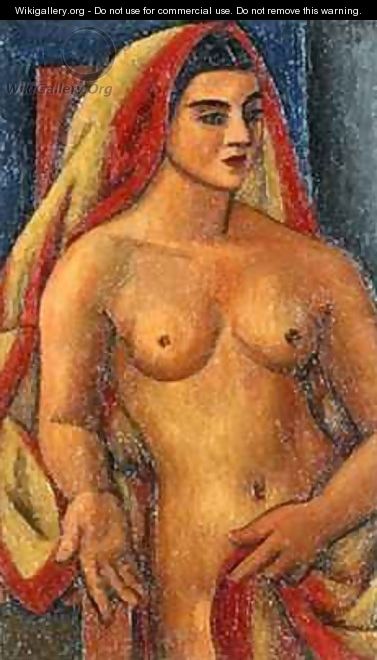 day have reason to be proud of him. I believe that a good artist is a very noble man, and it is worth while giving up many things which men consider very important, for others which we think still more so. From the little I could see of the character of your son
day have reason to be proud of him. I believe that a good artist is a very noble man, and it is worth while giving up many things which men consider very important, for others which we think still more so. From the little I could see of the character of your son , I have faith in him and I hope and believe he will make the best possible use of the opportunities I gather you are going to be generous enough to give him." Rothenstein managed to secure a place at the Slade School of Fine Art and arranged for his fees to be paid by the Jewish Educational Aid Society.
, I have faith in him and I hope and believe he will make the best possible use of the opportunities I gather you are going to be generous enough to give him." Rothenstein managed to secure a place at the Slade School of Fine Art and arranged for his fees to be paid by the Jewish Educational Aid Society.
 day have reason to be proud of him. I believe that a good artist is a very noble man, and it is worth while giving up many things which men consider very important, for others which we think still more so. From the little I could see of the character of your son
day have reason to be proud of him. I believe that a good artist is a very noble man, and it is worth while giving up many things which men consider very important, for others which we think still more so. From the little I could see of the character of your son , I have faith in him and I hope and believe he will make the best possible use of the opportunities I gather you are going to be generous enough to give him." Rothenstein managed to secure a place at the Slade School of Fine Art and arranged for his fees to be paid by the Jewish Educational Aid Society.
, I have faith in him and I hope and believe he will make the best possible use of the opportunities I gather you are going to be generous enough to give him." Rothenstein managed to secure a place at the Slade School of Fine Art and arranged for his fees to be paid by the Jewish Educational Aid Society. Gretchen Gerzina, the author of A Life of Dora Carrington:
Gretchen Gerzina, the author of A Life of Dora Carrington: 1893-1932 (1989), has argued: "At the Slade, Mark was at first something of a misfit. He had started school late in life, and had left it at the age of fourteen. His hair was short and his clothes were different. Most of all, however, the other students found him too serious and too intense. He was extremely handsome, with huge dark eyes, pale skin, and a thin body, and he was both solemn and
1893-1932 (1989), has argued: "At the Slade, Mark was at first something of a misfit. He had started school late in life, and had left it at the age of fourteen. His hair was short and his clothes were different. Most of all, however, the other students found him too serious and too intense. He was extremely handsome, with huge dark eyes, pale skin, and a thin body, and he was both solemn and 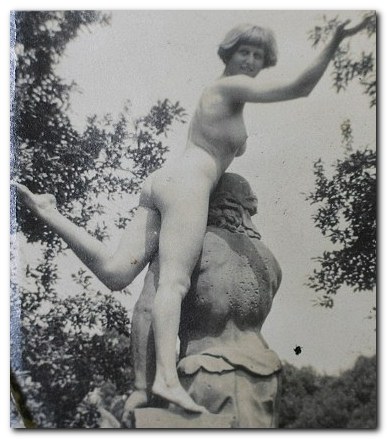 passionate about his art. Only at the polytechnic had he finally been introduced to museums and systematic schooling in the history of art, including the old masters. When he first arrived at the Slade at seventeen, he had the fervour of a convert who has surmounted great obstacles for his religion. In contrast, his fellow students seemed privileged and rather frivolous. Yet his early opinions of them were not untouched by envy."above dora carrington nude
passionate about his art. Only at the polytechnic had he finally been introduced to museums and systematic schooling in the history of art, including the old masters. When he first arrived at the Slade at seventeen, he had the fervour of a convert who has surmounted great obstacles for his religion. In contrast, his fellow students seemed privileged and rather frivolous. Yet his early opinions of them were not untouched by envy."above dora carrington nudeEventually he made friends with a group of very talented students. This included C.R.W. Nevinson, Stanley Spencer, John S. Currie
Stanley Spencer, John S. Currie , Maxwell Gordon Lightfoot,
, Maxwell Gordon Lightfoot, Edward Wadsworth,
Edward Wadsworth, Adrian Allinson
Adrian Allinson and Rudolph Ihlee
and Rudolph Ihlee . This group became known as the Coster Gang. According to David Boyd Haycock this was "because they mostly wore black jerseys, scarlet
. This group became known as the Coster Gang. According to David Boyd Haycock this was "because they mostly wore black jerseys, scarlet mufflers and black caps or hats like the costermongers who sold fruit and vegetables from carts in the street".
mufflers and black caps or hats like the costermongers who sold fruit and vegetables from carts in the street".
 Stanley Spencer, John S. Currie
Stanley Spencer, John S. Currie , Maxwell Gordon Lightfoot,
, Maxwell Gordon Lightfoot, Edward Wadsworth,
Edward Wadsworth, Adrian Allinson
Adrian Allinson and Rudolph Ihlee
and Rudolph Ihlee . This group became known as the Coster Gang. According to David Boyd Haycock this was "because they mostly wore black jerseys, scarlet
. This group became known as the Coster Gang. According to David Boyd Haycock this was "because they mostly wore black jerseys, scarlet mufflers and black caps or hats like the costermongers who sold fruit and vegetables from carts in the street".
mufflers and black caps or hats like the costermongers who sold fruit and vegetables from carts in the street".
Nevinson commented that the Slade "was full with a crowd of men such as I have never seen before or since." He also wrote that Gertler was "the genius of the place... and the most serious, single-minded artist I have  ever come across." Gertler was considered the best draughtsman to study at the Slade since Augustus John.
ever come across." Gertler was considered the best draughtsman to study at the Slade since Augustus John. Another student, Paul Nash,
Another student, Paul Nash, said that Gertler riding high "upon the crest of the wave".
said that Gertler riding high "upon the crest of the wave".
 Another student, Paul Nash,
Another student, Paul Nash, said that Gertler riding high "upon the crest of the wave".
said that Gertler riding high "upon the crest of the wave".In 1910 Dora Carrington joined the Slade School. Gertler and C.R.W. Nevinson both became closely attached to Carrington. According to Michael J. K. Walsh, the author of C. R. W. Nevinson: The Cult of Violence(2002):
Gertler and C.R.W. Nevinson both became closely attached to Carrington. According to Michael J. K. Walsh, the author of C. R. W. Nevinson: The Cult of Violence(2002):  "What he (Nevinson) was not aware of was that Carrington was also conversing, writing and meeting with Gertler in a similar fashion, and the latter was beginning to want to rid himself of competition for her affections. For Gertler the friendship would be complicated by sexual frustration while Carrington had no particular desire to become romantically involved with either man."
"What he (Nevinson) was not aware of was that Carrington was also conversing, writing and meeting with Gertler in a similar fashion, and the latter was beginning to want to rid himself of competition for her affections. For Gertler the friendship would be complicated by sexual frustration while Carrington had no particular desire to become romantically involved with either man."
 Gertler and C.R.W. Nevinson both became closely attached to Carrington. According to Michael J. K. Walsh, the author of C. R. W. Nevinson: The Cult of Violence(2002):
Gertler and C.R.W. Nevinson both became closely attached to Carrington. According to Michael J. K. Walsh, the author of C. R. W. Nevinson: The Cult of Violence(2002):  "What he (Nevinson) was not aware of was that Carrington was also conversing, writing and meeting with Gertler in a similar fashion, and the latter was beginning to want to rid himself of competition for her affections. For Gertler the friendship would be complicated by sexual frustration while Carrington had no particular desire to become romantically involved with either man."
"What he (Nevinson) was not aware of was that Carrington was also conversing, writing and meeting with Gertler in a similar fashion, and the latter was beginning to want to rid himself of competition for her affections. For Gertler the friendship would be complicated by sexual frustration while Carrington had no particular desire to become romantically involved with either man."
From a reading of this book, several explanations emerge - a failed marriage, burdensome debts, the continuing struggle against tuberculosis and clinical depression, and a faltering reputation as a painter.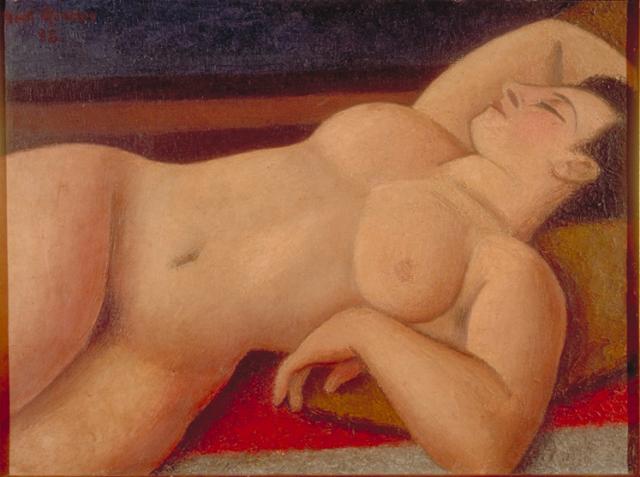 It also becomes clear that Gertler was his own worst enemy, and his suicide was the culmination of a pattern of self-destructive acts.
It also becomes clear that Gertler was his own worst enemy, and his suicide was the culmination of a pattern of self-destructive acts.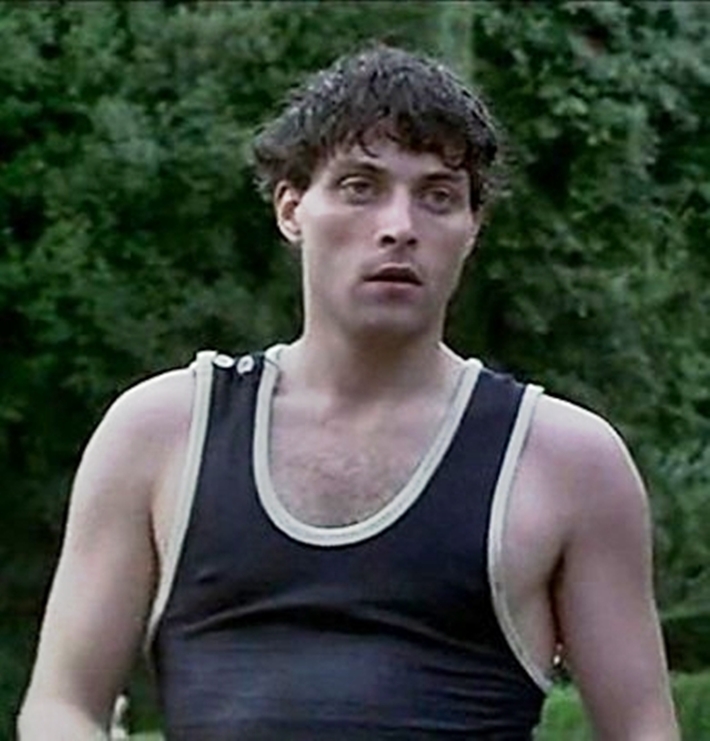
 It also becomes clear that Gertler was his own worst enemy, and his suicide was the culmination of a pattern of self-destructive acts.
It also becomes clear that Gertler was his own worst enemy, and his suicide was the culmination of a pattern of self-destructive acts.
To a wider public now, Gertler is known this passionate attachment to the painter Dora Carrington. For 10 years, from when he met her as a fellow student at the Slade School of Art, he loved the wrong woman, a relationship recorded in letters that are terrible to read, that smouldered on even after Carrington had set up home with Lytton Strachey.In 1931
woman, a relationship recorded in letters that are terrible to read, that smouldered on even after Carrington had set up home with Lytton Strachey.In 1931 
 woman, a relationship recorded in letters that are terrible to read, that smouldered on even after Carrington had set up home with Lytton Strachey.In 1931
woman, a relationship recorded in letters that are terrible to read, that smouldered on even after Carrington had set up home with Lytton Strachey.In 1931 
He is also known for his part in the lives of writers such as DH Lawrence, Katherine Mansfield and Aldous Huxley (he is the model for the painter, Gomauld, in the latter's Crome Yellow); as Lady Ottoline Morrell's artist-in-residence at Garsington Manor; and for a single, much-reproduced work of 1916: The Merry-Go-Round (currently hanging in Tate Britain).
Huxley (he is the model for the painter, Gomauld, in the latter's Crome Yellow); as Lady Ottoline Morrell's artist-in-residence at Garsington Manor; and for a single, much-reproduced work of 1916: The Merry-Go-Round (currently hanging in Tate Britain).
 Huxley (he is the model for the painter, Gomauld, in the latter's Crome Yellow); as Lady Ottoline Morrell's artist-in-residence at Garsington Manor; and for a single, much-reproduced work of 1916: The Merry-Go-Round (currently hanging in Tate Britain).
Huxley (he is the model for the painter, Gomauld, in the latter's Crome Yellow); as Lady Ottoline Morrell's artist-in-residence at Garsington Manor; and for a single, much-reproduced work of 1916: The Merry-Go-Round (currently hanging in Tate Britain).With its acidic comment on the herd mentality of the first-world-war period, this prescient image of robotic uniformity retains its power, but it is in fact Gertler's least typical painting. In his maturity, his more usual  subjects were the stuff of Parisian modernism - pneumatic nudes, views through windows, still lifes with
subjects were the stuff of Parisian modernism - pneumatic nudes, views through windows, still lifes with 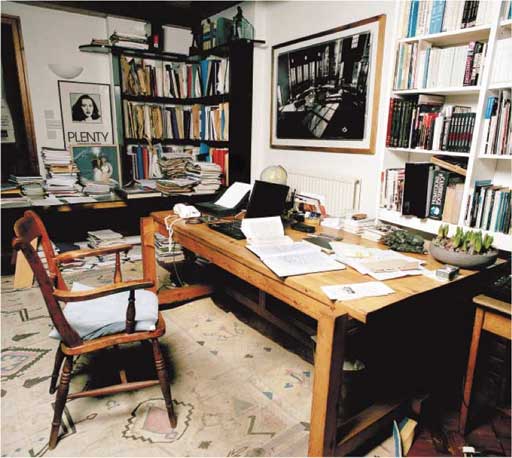 guitars, fruit and flowers. But none quite matches in intensity either The Merry-Go-Round or the early figures and portraits
guitars, fruit and flowers. But none quite matches in intensity either The Merry-Go-Round or the early figures and portraits taken from the life he knew in the Jewish quarter of London's East End, where he had been born.
taken from the life he knew in the Jewish quarter of London's East End, where he had been born.
 subjects were the stuff of Parisian modernism - pneumatic nudes, views through windows, still lifes with
subjects were the stuff of Parisian modernism - pneumatic nudes, views through windows, still lifes with  guitars, fruit and flowers. But none quite matches in intensity either The Merry-Go-Round or the early figures and portraits
guitars, fruit and flowers. But none quite matches in intensity either The Merry-Go-Round or the early figures and portraits taken from the life he knew in the Jewish quarter of London's East End, where he had been born.
taken from the life he knew in the Jewish quarter of London's East End, where he had been born.
There are two plaques to Gertler in London. One is in Elder Street, Spitalfields, the other on a studio in 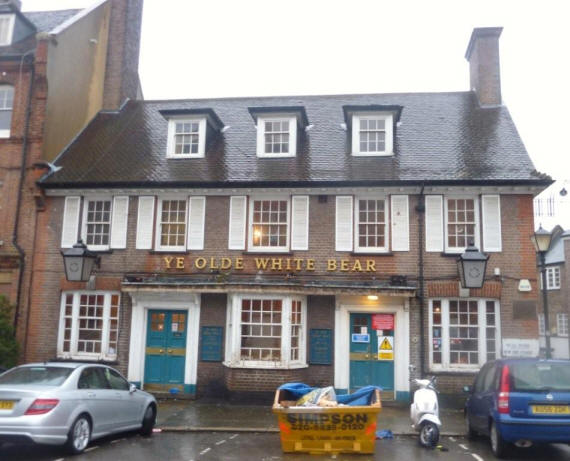 Well Road,
Well Road,  Hampstead. The geographical distance between them highlights the social and personal upheaval of Gertler's life.
Hampstead. The geographical distance between them highlights the social and personal upheaval of Gertler's life.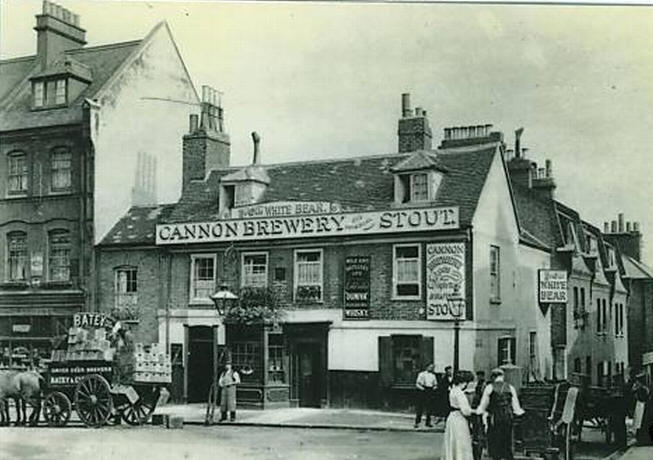
 Well Road,
Well Road,  Hampstead. The geographical distance between them highlights the social and personal upheaval of Gertler's life.
Hampstead. The geographical distance between them highlights the social and personal upheaval of Gertler's life.
This new biography carefully evokes the self-contained, immigrant Jewish world of Gertler's childhood around 1900. His father was a not very successful furrier; his mother Golda a plucky, embracing figure whose big presence her youngest child would commemorate in several early paintings. At his birth in 1891, Mark was the 26th person to be living in a house in Gun Street; later there were three years in a slum in Sion Square
embracing figure whose big presence her youngest child would commemorate in several early paintings. At his birth in 1891, Mark was the 26th person to be living in a house in Gun Street; later there were three years in a slum in Sion Square  where the Gertler family of seven existed in one room.
where the Gertler family of seven existed in one room.
 embracing figure whose big presence her youngest child would commemorate in several early paintings. At his birth in 1891, Mark was the 26th person to be living in a house in Gun Street; later there were three years in a slum in Sion Square
embracing figure whose big presence her youngest child would commemorate in several early paintings. At his birth in 1891, Mark was the 26th person to be living in a house in Gun Street; later there were three years in a slum in Sion Square  where the Gertler family of seven existed in one room.
where the Gertler family of seven existed in one room.
Although he spoke Yiddish in his early years, Mark's anglicisation began at school and he developed an English that was vivid and forthright. A clever, pretty, nervous child, mad about drawing, he was a brilliant mimic and storyteller, and adored the Yiddish theatres of his neighbourhood.(above art shop near the slade where gertler would have gone, below its modern metamorphisis)

But what was to be done with this little prodigy? A chance family connection led him to the Regent Street Polytechnic to study art in the evenings, supported by a tedious day-time apprenticeship with a stained-glass manufacturer. A successful application in 1908 to the Jewish Education Aid Society enabled him to attend the Slade School. Without this society's financial help, Gertler's early career would have been impossible, but he developed a hatred of the rich, conventional English Jews whom he describes as "patronising horrors".

This established almost a routine of dependence and rejection that accounts for several later swings in his professional fortunes. Nevertheless, he spent his Slade years in a hail of grants, scholarships and prize money, and was soon exhibiting in prominent London venues. His style was sober and meticulous, underpinned by a fine Slade School draughtsmanship, with which he recorded his family and local Jewish life.
Up to this moment, Sarah MacDougall's narrative is well paced and evocative, and includes excellent new research. The trouble begins when Gertler's life becomes more complex. The protracted agony of his affair with Carrington, in which both treated each other appallingly, has been told several times before, notably by Michael Holroyd in his Lytton Strachey.(natalie bevan above and below.
has been told several times before, notably by Michael Holroyd in his Lytton Strachey.(natalie bevan above and below.
 has been told several times before, notably by Michael Holroyd in his Lytton Strachey.(natalie bevan above and below.
has been told several times before, notably by Michael Holroyd in his Lytton Strachey.(natalie bevan above and below.
MacDougall's account is objective enough but short on analysis, and relies too much on quotations from other writers. This applies even more to her treatment of Gertler's position in the burgeoning art world of post-impressionist London. She may well have spent "more than ten years" studying Gertler, as the blurb tells us, but she is sketchy on British art of the period.
She fails to place Gertler in the context of other Anglo-Jewish contemporaries such as Bomberg, nor does she investigate the influence on him of artists such as André Derain or Juan Gris (not mentioned once, yet a crucial stimulus for Gertler in the 1930s). She even misses the great moment when Maynard Keynes bought a Cézanne of apples and Gertler went wild about it.
On the other hand, she scrupulously describes his progress, painting by painting (but maddeningly doesn't tell us where most of them are), from the moment the post-impressionists knocked the wind out of his conservative youthful sails. At first he was proudly resistant. But the achievement of The Merry-Go-Round soon afterwards shows the ambition of his personal conception of "an art of today".

Like so many artists after the end of the first world war, Gertler began to recast his painting, and came under the not-always-beneficial influence of the late work of Renoir. His forms become Michelin-esque, his colour was often garish, and his still lifes claustrophobic pile-ups of distressing objects. But there is no doubting the immense seriousness of his effort as an artist, one who, as his loyal supporter, Roger Fry, commented, refused "ever to trifle with his talent".

Most artists' biographies are less than compelling: few leave behind exciting correspondence or writings that would enliven the narrative of their daily studio slog. Gertler is an exception. His vivid letters reveal an absolute commitment to painting, filtered through the agitated lens of his euphoria and despair. But they also disclose a personality that is more arresting than engaging, invoking pity rather than affection.

How he bit the hands that fed him! He quarrelled with most of his friends; he sponged off susceptible women and optimistic gay men. He was the wrong shape to fit into any particular circle and liked, instead, to form triangular relationships in which he occupied an excessive hypotenuse. But we have to give him credit that he never, as far as we know, guyed Lady  Ottoline Morrell, his great friend and protector - an achievement unique, perhaps, among her vast array of friends.
Ottoline Morrell, his great friend and protector - an achievement unique, perhaps, among her vast array of friends.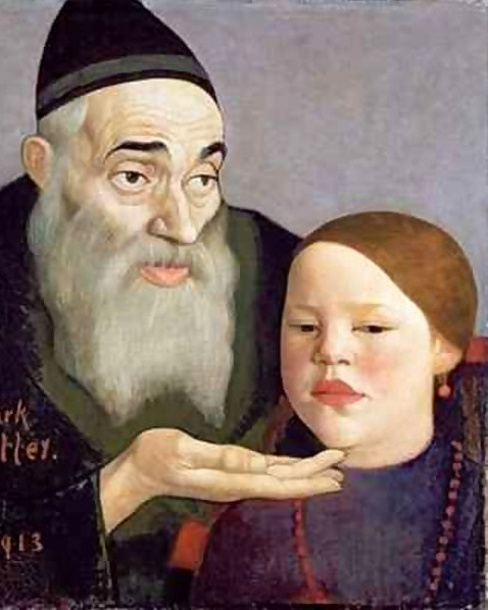 acDougall had no wish to portray her subject as an unattractive character. But it is perhaps a measure of her success that this is so. Gertler was essentially an innocent for whom painting was the only reality. The encroachment of the real world - responsibilities, relationships, the professional aspects of his career - seemed to have floored him at every turn.
acDougall had no wish to portray her subject as an unattractive character. But it is perhaps a measure of her success that this is so. Gertler was essentially an innocent for whom painting was the only reality. The encroachment of the real world - responsibilities, relationships, the professional aspects of his career - seemed to have floored him at every turn.
 Ottoline Morrell, his great friend and protector - an achievement unique, perhaps, among her vast array of friends.
Ottoline Morrell, his great friend and protector - an achievement unique, perhaps, among her vast array of friends. acDougall had no wish to portray her subject as an unattractive character. But it is perhaps a measure of her success that this is so. Gertler was essentially an innocent for whom painting was the only reality. The encroachment of the real world - responsibilities, relationships, the professional aspects of his career - seemed to have floored him at every turn.
acDougall had no wish to portray her subject as an unattractive character. But it is perhaps a measure of her success that this is so. Gertler was essentially an innocent for whom painting was the only reality. The encroachment of the real world - responsibilities, relationships, the professional aspects of his career - seemed to have floored him at every turn.He had much to contend with - there is a huge distance between the kitchen love of his mother Golda and the pot-pourri affection of Lady Ottoline, between the ideal of "artist as hero" that he aspired to and the disease-riddled figure with mounting debts that he became. His overriding egotism, just bearable when he was young, became tedious in later years, straining the devotion of his few loyal friends. In the end, the sealed studio and the gas tap seemed the only way to reconcile the conflicts of, in his own words, "the all-in-wrestling match we call life".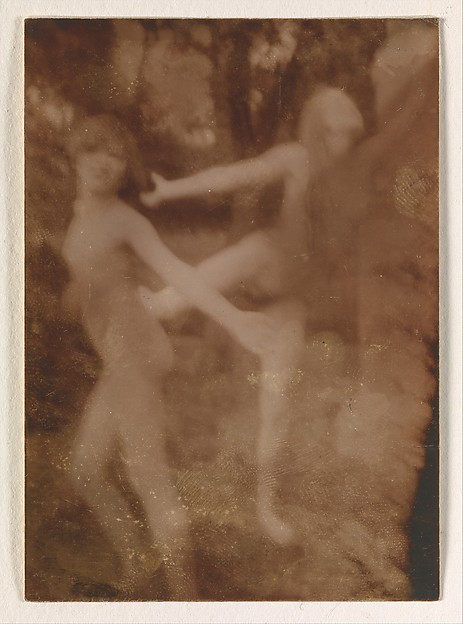

No comments:
Post a Comment